October 2018
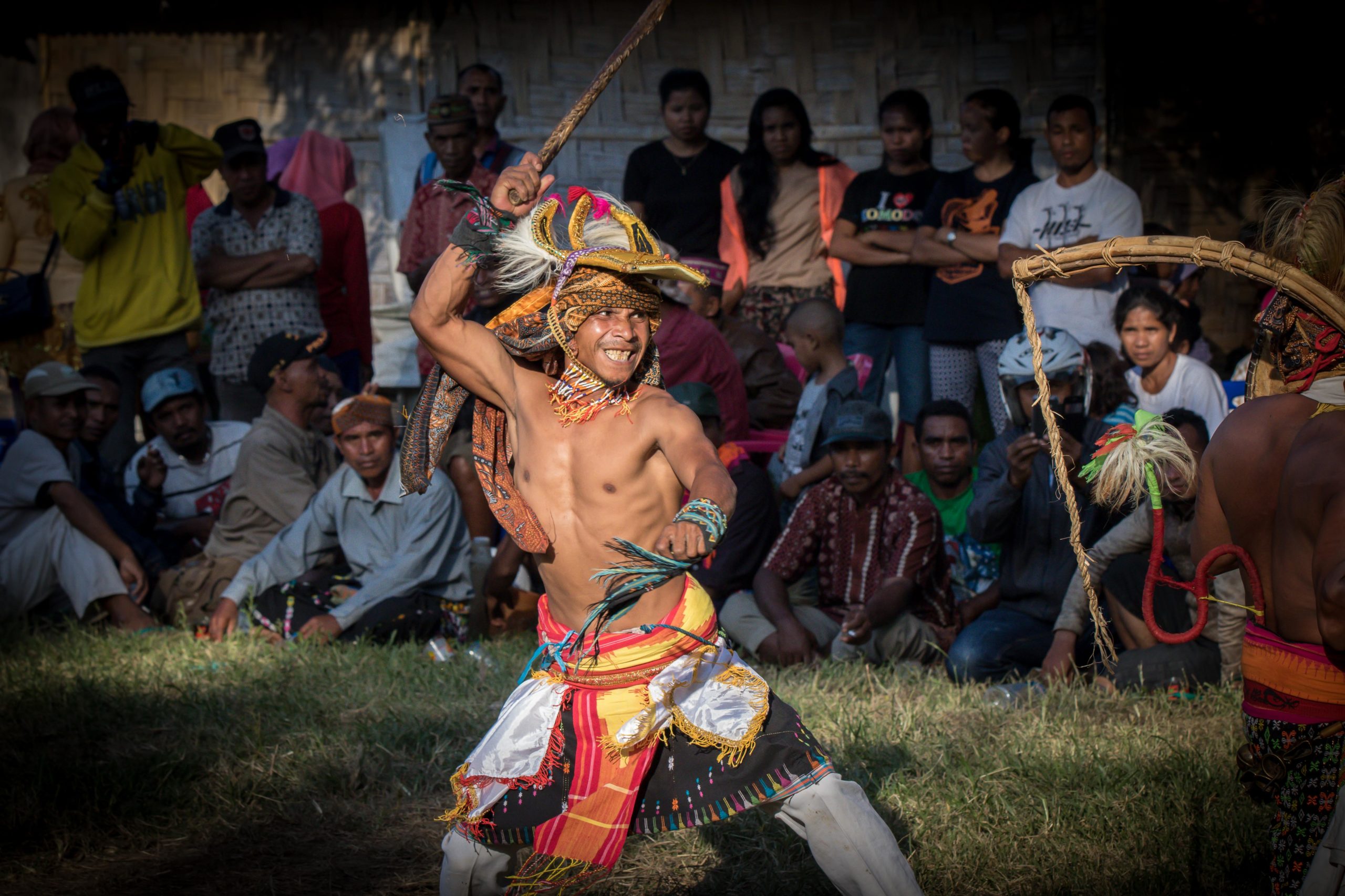
Caci is a ritual whip fight and a major element of the Manggarai cultural identity in the western part of the island of Flores. Caci is played out by two men, with one in the role of aggressor and the other one in the role of defender. Caci equipment, consisting of a whip, a shield, masks, and sticks, bursts with symbolism: the aggressor’s whip is made out of rattan, with a leather-covered handle. It symbolizes male, the phallic element, the father, and the sky. The defender’s round shield represents the female, the womb, and the earth. It is usually made out of bamboo, rattan, and covered with buffalo hide. As these meanings suggest, the male and the female elements are united whenever the whip hits the shield – symbolizing a sexual unity as an essential premise in giving live.
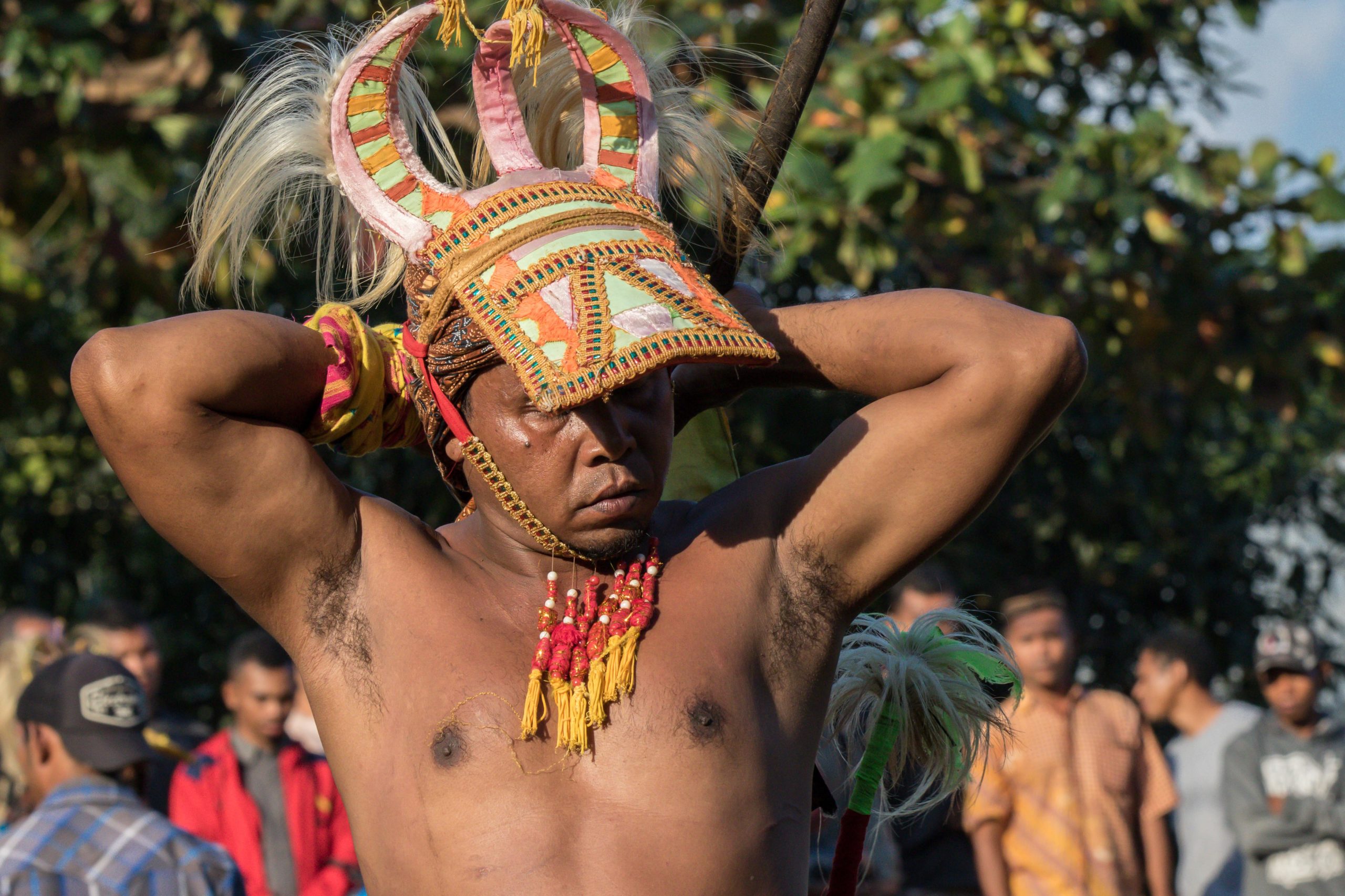
The players’ heads are covered with a wooden or leather mask wrapped with cloth and goat hair that hangs down at the back. The two horns of the mask represent the strength of the water buffalo. For additional protection from the lashes of the whip, the defender holds a stick in his left hand.
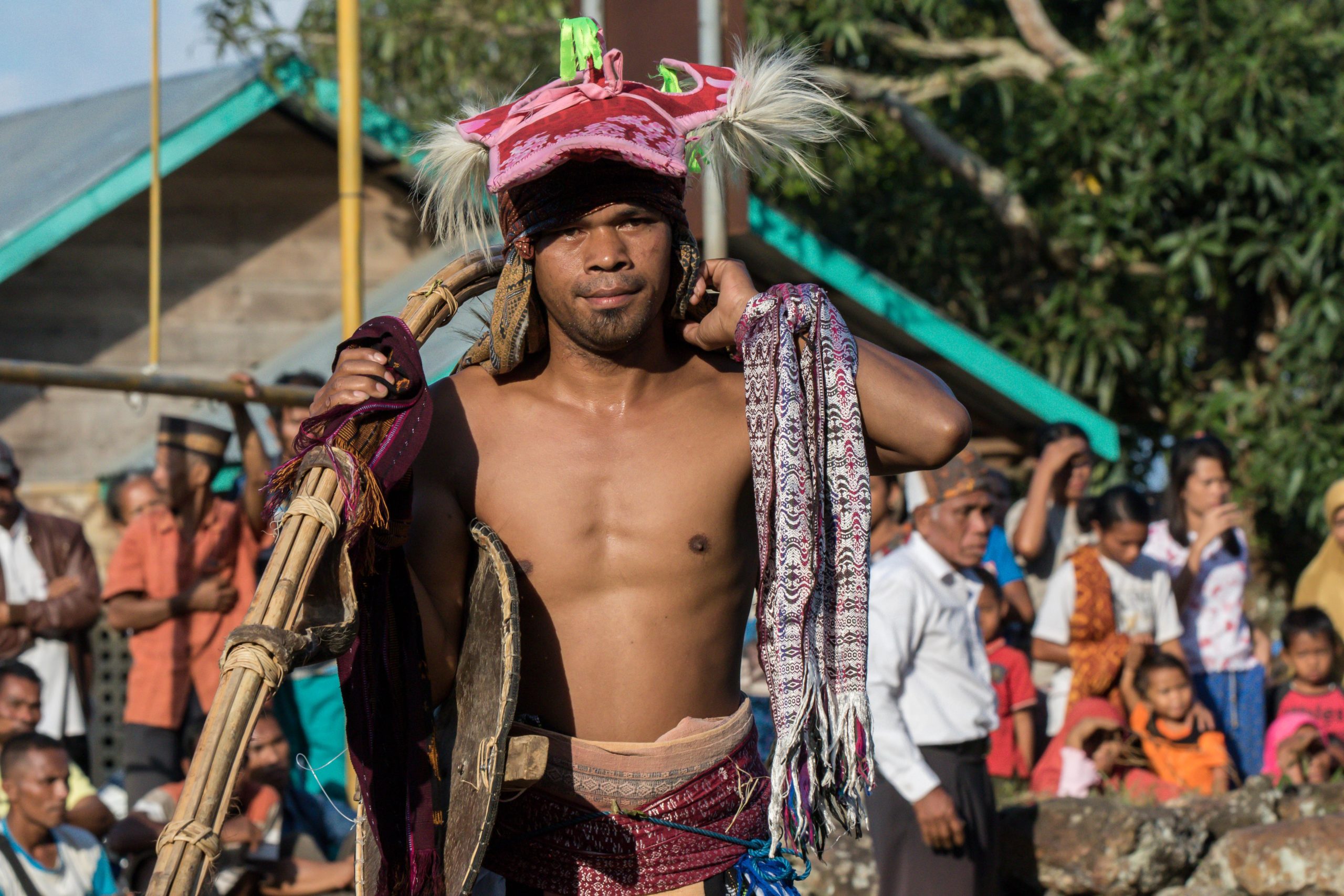
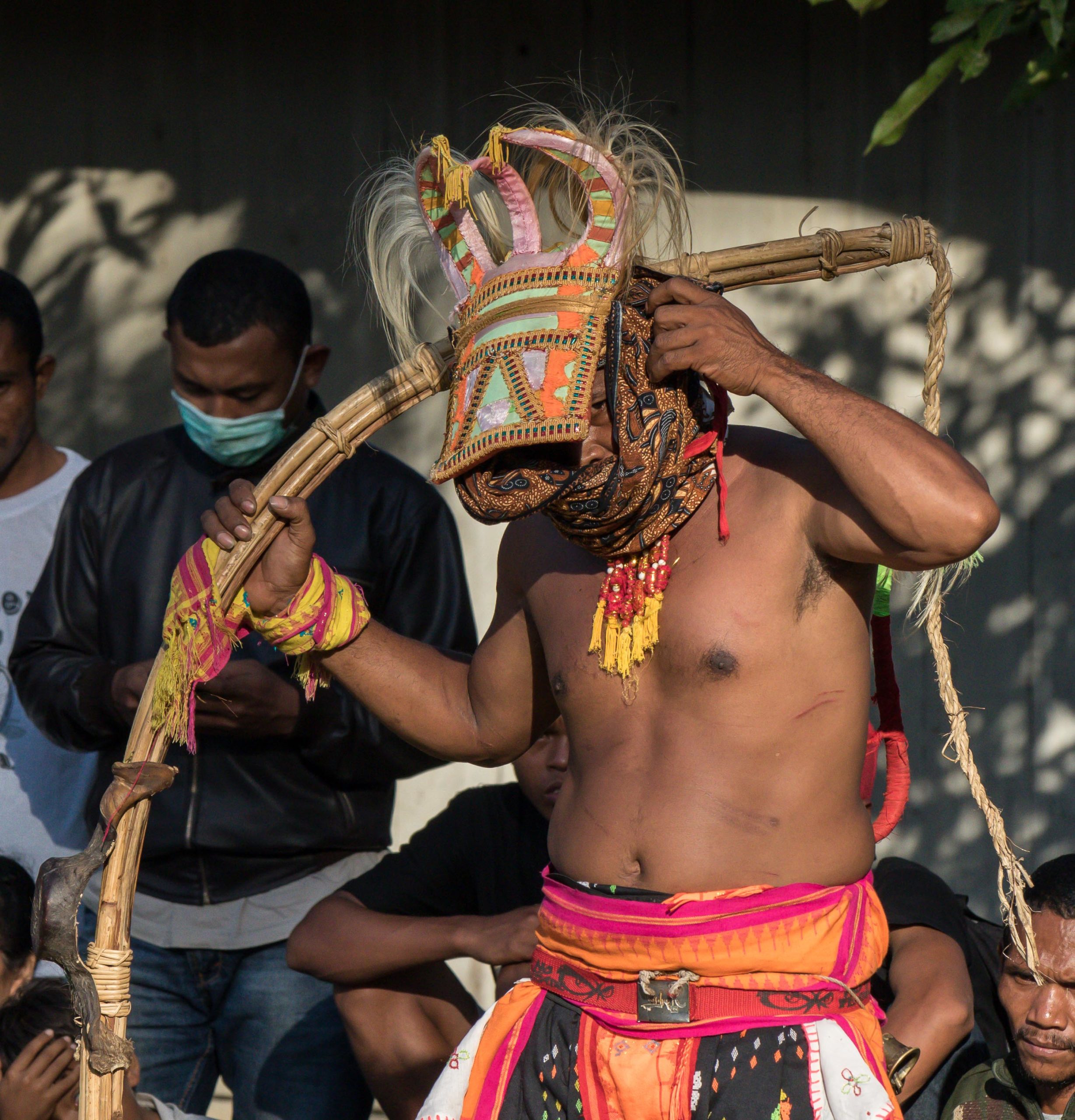
While fighting, the men wear a traditional songket (woven cloth) over a pair of regular pants. A belt of bells worn on the hip and a string of bells strapped on the ankles create a peculiar sound. The upper body remains bare and uncovered, leaving it exposed to the whips’ lashes.
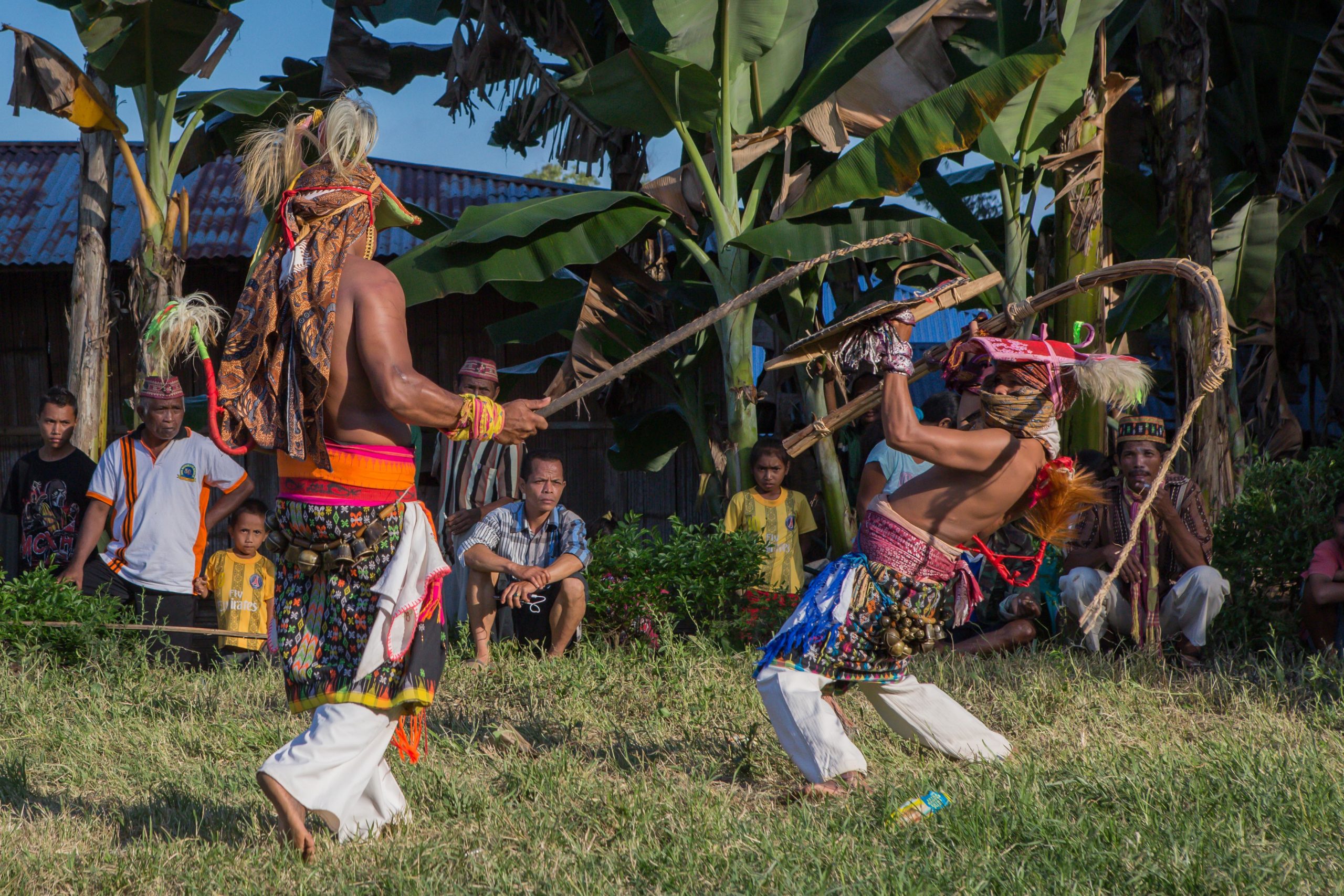
At the start of the duel the fighters shuffle their feet and raise spectators’ tension by running back and forth towards each other. The aggressor tries to hit his opponent’s body with the whip. However being hit does not automatically mean losing the game – it is more important which part of the body is hit in deciding the winner. A hit in the face or on the head means losing the game; a hit on the back, though, is a good sign, promising that next year’s harvest will be prosperous. The roles of aggressor and defender are reversed after every whip strike, and, after four trials, a new pair of opponents will take their chance. Even though it is a playful event, caci also has a sacrificial function: the blood that is shed from the wounds caused by the whips is an offering to the ancestors, who, in return, will ensure the fertility of the land.
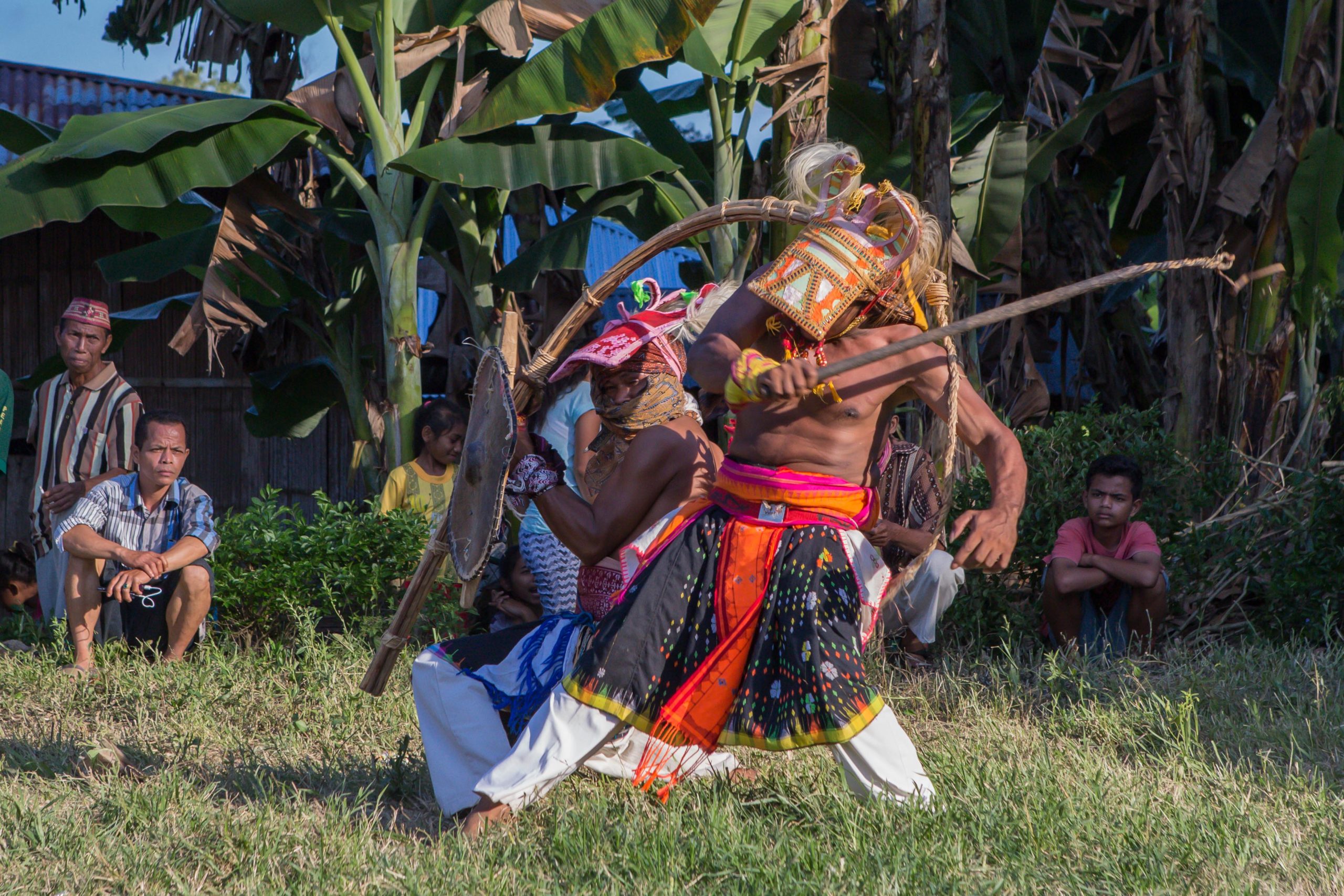
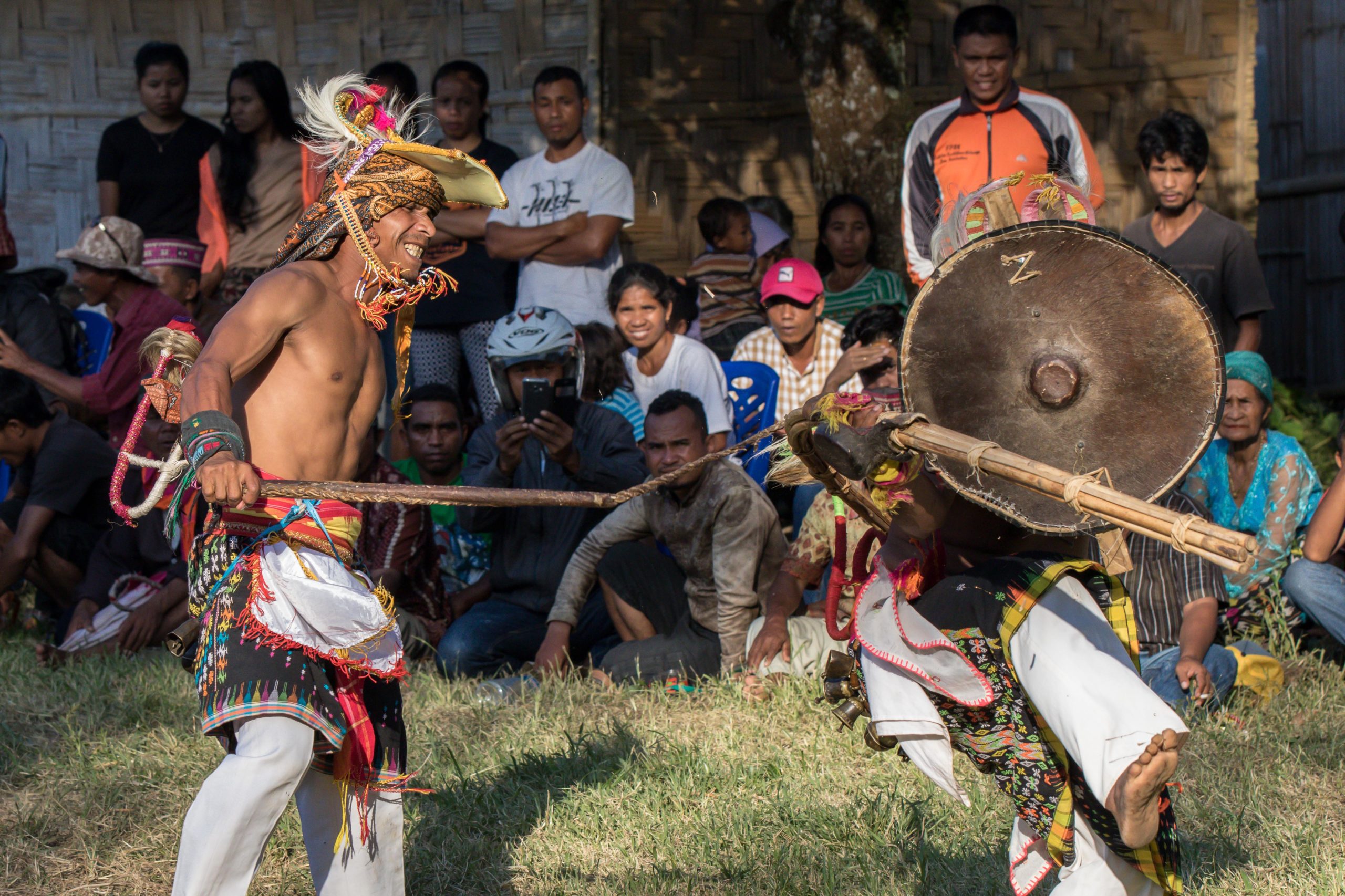
Caci used to be performed frequently during Penti, a festival held after harvest to end the old agricultural year and begin the new one. Being part of the integral ceremonial and ritual context of Penti, caci was never performed as a stand-alone event. The performances lasted at least one day – more often two or three days – always accompanied by drum and gong music. The preparations for caci required many fixed ritual procedures accompanied by animal sacrifice. Other occasions for caci performances included marriages, births, and funerals. The functions of caci were manifold: besides being a social event and a way to fulfil obligations of offerings to the ancestors, it is also an opportunity for young men to prove their virility and – in the past – a means of conflict management for disputing villages.
